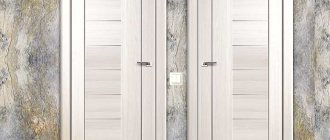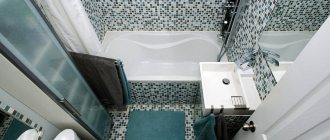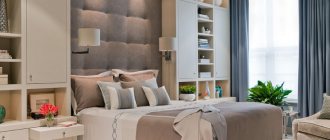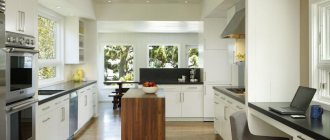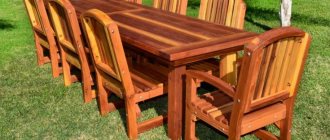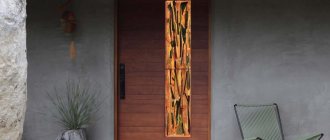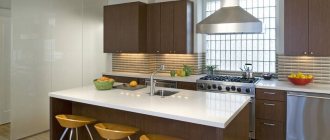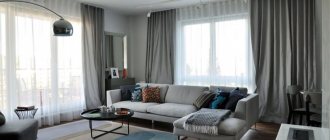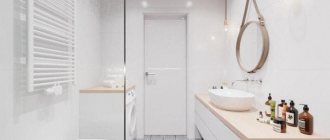Wallpaper in the toilet is an interesting design solution that allows you to effectively decorate a room without much financial or physical effort. Manufacturers offer a wide variety of models with high technical characteristics, which makes it possible to use them in the design of areas with a high humidity coefficient.
Advantages and disadvantages of decorating toilet walls with wallpaper
The finishing material has a lot of advantages, which determines the demand for wallpaper in toilet design:
- competitive cost. The price range for these finishing products varies within an affordable range. A separate category of canvases is presented in a relatively expensive segment, but the “risk” is justified by the high technical and decorative potential of the material;
- ease of installation. Even an amateur, who has step-by-step instructions and the necessary tools at hand, can handle such a job as repairing a toilet with wallpaper;
- affordable prices for the service. If it is not possible to wallpaper the walls of the room yourself, call a professional without fear that decorating the toilet with wallpaper will cost a pretty penny;
- easy dismantling. Unlike other types of coatings, this finish is easy to dismantle without much labor and time;
- high maintainability. If the coating on a separate area of the surface is worn or torn, it is easy to correct the flaw by replacing the selected piece of canvas with a new one. If you don’t have a material of a similar design at hand, you can choose a canvas of a harmonious range and combine the finish.
Another big plus in the treasury of advantages of decorating a toilet with wallpaper is the extremely wide range of products. None of the other types of coatings can compete with it in terms of variety of textures, colors, and patterns.
Disadvantages of using wallpaper in the toilet:
- not all types of paintings are suitable for finishing a bathroom. It is worth choosing especially carefully among special categories whose technical properties allow operation in high humidity environments;
- Improper wallpapering in the toilet can lead to peeling of the coating from the surface.
It is worth following the manufacturer’s recommendations exactly so as not to be disappointed in your choice.
Popular types of wallpaper
Technologies do not stand still, and every year new materials appear that amaze with their high performance characteristics. In order to understand exactly what is suitable in a particular situation, you need to familiarize yourself in advance with the existing types of wallpaper for the toilet in the apartment, consider their advantages and disadvantages.
Non-woven and vinyl wallpaper
The base, made of polymer materials, has increased moisture resistance characteristics, so it can be subjected to wet cleaning. The structure of such wallpaper is quite dense. To properly glue them to the wall, you need to use a special glue for vinyl or non-woven types. It is also worth noting the durability of the material and its resistance to mechanical stress.
There are quite a lot of positive characteristics of this kind of wallpaper for the toilet, but when choosing it to decorate the walls of the toilet, you need to pay special attention to the quality of the pasting.
Liquid wallpaper
Very often this type is called decorative plaster. This is primarily due to a similar application technology. The base of liquid wallpaper for the toilet includes: an adhesive base, acrylic particles, cotton or cellulose fibers, sometimes wood shavings or mica powder. They initially look like dry powder, which is brought to the desired consistency using ordinary water. Before applying liquid wallpaper in the toilet, the surface must be carefully prepared, cleaned of old materials and primed with special solutions.
Fiberglass or fiberglass
A special feature of this type of wallpaper for the toilet is the presence of glass fibers at the base. They are what make the canvas resistant to moisture, abrasion, scratches and fading in the sun. In terms of their texture, glass wallpaper is very similar to liquid wallpaper, but at the same time they are glued as usual, with sheets end-to-end. Work should only be carried out using special adhesives. Glue should only be applied to the walls. It is very important to monitor the quality of the pasting. Under no circumstances should air spaces be allowed under the surface to be glued or poorly glued areas along the canvas.
Drawing an analogy with glass wool, many believe that glass wallpaper is dangerous to human health and life. This is wrong. The production technology involves the use of larger particles than in glass wool, therefore eliminating the possibility of their spreading in the air and thus entering the lungs. Also, the glass fibers in the material are intertwined more tightly.
Wallpaper for the toilet in the apartment: types, features
Deciding what wallpaper to put in the toilet? Decorative fabrics for decorating a hygiene room are presented in the following categories:
- washable - perhaps the most common type of finish, has a water-repellent film, sold in the budget segment;
- vinyl - an improved version of the previous copy, the protective layer is made of polyvinyl chloride in a smooth or foamed design;
- on a synthetic basis - the material is a textile fabric on a thin foam rubber backing;
- fiberglass wallpaper - the finishing is made on the basis of thin glass threads;
- liquid wallpaper is a high-tech type of cladding, sold in powder form, which is diluted with water before use;
- Photo wallpaper is a current option for decorative finishing, with the help of which it is easy to improve the visual perception of the space of a small hygiene room.
Each of the presented samples is distinguished by the peculiarities of its manufacture and application in the design of the sanitary facility.
Which wallpaper is best?
There are many types of wallpaper that are suitable for the toilet room. It is worth starting from individual preferences and characteristics of the bathroom.
Washable
Many people choose washable wallpaper, in other words, sheets of paper on which one or another design is applied. The surfaces of the material are protected with a waterproof film, thanks to which moisture will not cause them to peel off from the walls. This model has a low cost, and sticking it on the walls will not be difficult, which is a significant advantage. With a protective film, the wallpaper will not be afraid of dust, dirt, mold and mildew. This model has advantages over the usual paper one; it will last much longer.
With synthetic base
You can hang wallpaper that has a synthetic base. That is, they consist of textile fabrics glued to thin foam rubber. This finishing material has undoubted advantages: it is environmentally friendly and has good sound and heat insulation. Instead of wet cleaning, you need to clean this wallpaper with a vacuum cleaner.
Vinyl
Some people prefer vinyl wallpaper. They will not be cheap to repair, but this material is moisture resistant, so it will not be afraid of deformation from dampness and temperature changes. Gluing them is not difficult, you just need to take into account the special choice of glue that is suitable for heavy material. Vinyl wallpaper will not bubble or peel off the wall, its appearance will not change for a long time, it will serve for ten years or even longer.
Glass wallpaper
Another interesting option is glass wallpaper, which is made from fiberglass (paper and thin glass threads). The canvas itself is light gray, but then it is painted over with paint in different shades. These wallpapers are quite expensive, but they are worth it considering their characteristics. They are durable, so they will not wear off due to any damage for a long time (for this reason, they are used not only for bathrooms in apartments, but also for public toilets).
The fiberglass canvas will almost not absorb wet fumes, they are not afraid of chemicals and even aggressive substances (powders, solvents, etc.), so you can safely use a variety of detergents to clean them.
Fiberglass models have environmental and fire protection properties. Neither water nor fire will harm them. Another advantage is that this material can be painted in any color, which will allow you to turn interesting interior ideas into reality.
Source: dekoriko.ru
Washable wallpaper for the toilet: a practical finishing option
The material is a paper base with a protective film against moisture. The surface is easily cleaned from dirt and dust and can withstand repeated cleaning with a damp cloth. Prices for washable wallpaper are presented in the budget range. If handled with care, this category of product can last much longer than paper wallpaper, even in the decoration of a toilet, only if the bathroom is not combined with a bathtub.
What is especially attractive about washable linens is that, if desired, you can easily and inexpensively update the design of the room.
Color solutions for the bathroom
The correct combination of several shades makes the design trendy, looks most advantageous, and helps to visually correct the space. Dark colors make the room smaller, so a light palette is more suitable for a small bathroom. In addition, it will be possible to successfully combine plain coatings with patterns and three-dimensional photographic images. Before the final choice of colors, be sure to think through their impact on the overall perception of style.
Room in dark colors
Most toilet rooms are limited in size, so dark accents are placed in a minimal amount. Spacious rooms are usually combined with a bathroom. If the room is of sufficient size, black, brown, blue, and purple shades look chic. You can choose plain or accent patterns.
For small rooms choose light shades and warm tones. A cold palette is acceptable, but then it will look less cozy and the design will look stricter.
Gray, silver tones, snow-white colors, and beige look impressive. Against this background, it is recommended to place bright accents - light green, yellow, lavender, blue, pink or other details.
Vinyl wallpaper in the toilet: spectacular interior decor
Finishing modifications are made on a paper or non-woven basis; there are also examples on a fabric backing. The protective layer of polyvinyl chloride has high hydrophobic properties and can withstand even direct contact with water. Particularly popular are non-woven wallpapers with embossing, which attract a variety of visual effects.
Pros and cons of using vinyl sheets in the hygiene room:
- If the installation technology is followed, this finish will last at least 10 years;
- the surface does not deform under the influence of high humidity and temperature changes, does not react to dirt, and does not lose its visual appeal under the influence of UV rays;
- the coating is sold in the expensive segment. Although you can choose inexpensive vinyl options from manufacturers’ collections.
Another significant disadvantage of cladding in this category is the relative complexity of installation. If funds allow, it is worth buying canvases with the back surface treated with adhesive. In this case, it is enough to apply glue to the wall and attach a cut vinyl trellis.
Wallpaper on a synthetic basis: properties and capabilities
The material includes a duo of textile fabric and foam backing. The finish has a pronounced sound and heat insulation effect and is easy to clean with a vacuum cleaner. The surface is not exposed to sunlight. To eliminate the risk of harmful microorganisms arising inside the coating in high humidity environments, it is worthwhile to provide a high-quality ventilation system in the hygiene room.
What should you consider when choosing wallpaper for the bathroom and toilet?
When choosing wallpaper for the bathroom, remember that this is the case when appearance is not the main thing. The material from which the wallpaper is made is much more important. Give preference to waterproof, liquid and fiberglass wallpaper. But paper and fabric ones have no place there - they won’t last even a few months. Wallpaper glue is no less important - only moisture-resistant glue will do.
Another requirement is good ventilation in the bathroom. Otherwise, you will suffer from mold even with beautiful wallpaper.
Wallpaper for the toilet, if you have a separate bathroom, you can choose any wallpaper. But it is desirable that they are washable. To prevent the growth of bacteria on the surface of the walls.
Liquid wallpaper in the toilet
The relevance of the coating in interior fashion is due to its high resistance to external factors and spectacular appearance. Liquid wallpaper is a powder base with fillers that are designed to provide a special surface texture. Before work, the dry mixture is diluted with water and the plaster is applied using a spatula. To stabilize the finish, it is coated with varnish, which also provides a moisture-proof effect. Facing a toilet with liquid wallpaper is economically advantageous when compared with tiles, and at the same time it has competitive technical characteristics.
Types of coatings for bathrooms
If you still decide to focus on wallpaper products, you should be aware of the difference between the individual categories of wallpaper for walls. Wallpaper for toilet walls can be vinyl, fiberglass, liquid or non-woven .
Remember! Pasting paper wallpaper in the interior of a toilet is not recommended due to the weak moisture-repellent properties of this material. Such coatings will quickly absorb moisture, become deformed and peel off from the walls. The solution is to use washable paper wallpaper.
A material that differs from standard wallpaper for walls - liquid wallpaper - is considered a good option for decorating walls in such a room. Liquid wallpaper is a powder of a rich shade, reminiscent of decorative plaster in its properties, which dissolves in water and is evenly applied to the surface of the walls.
When using such wallpaper, do not forget to level the walls first : the granular structure of the powder will help to mask minor defects, but significant irregularities will remain visible even after finishing work.
Vinyl wallpapers are fairly expensive finishing materials, but their performance characteristics fully correspond to the cost. They are able to withstand constant exposure to moisture and steam, and are easily glued to the surface of the walls.
Tip: for vinyl wallpaper it is recommended to use special glues and adhesives, since the multilayer structure of such materials is quite heavy and difficult to adhere to with standard types of glue.
Since vinyl wallpaper is glued end-to-end and not overlapping , pay attention to the correspondence of individual elements of the design to the overall composition. This is especially true for canvases designed to play an accent role in the interior of a toilet or bathroom: such wallpaper can have not only bright patterns, but also overflows, relief plots and other decorative features.
Non-woven wallpaper, which has similar properties, is famous for its original relief texture. Most often, such materials are made in one color, and the emphasis on the walls is formed by geometric, floral or abstract volumetric motifs.
Many non-woven and vinyl wallpapers have the ability to easily clean the outer layer of the canvas. Such materials are especially useful where contamination occurs periodically due to careless use.
To clean, you do not have to exert maximum effort, since the coatings can be easily washed with a regular soft sponge and detergent. In addition, coatings of this type are resistant to mold and mildew, and your room will feel like new for a long time.
The features of fiberglass wallpaper include the possibility of gluing in a humid environment, resistance to chemical agents (which greatly facilitates the process of cleaning walls), as well as the possibility of reusable painting. Such wallpaper will be useful for those who prefer to emphasize the style of the interior through shades rather than images on the walls .
If you want to create an unusual style for your bathroom and toilet, choose large-format photo wallpaper to decorate one of the walls. They will not only update the interior, but will also preserve their appearance for a long time: many photo wallpapers have a more durable structure and can easily withstand moisture.
Having decided what kind of wallpaper you can put on the toilet, you can proceed to the next stage of preparation for decorating this room - choosing the shades and patterns of the material.
Using fiberglass sheets to decorate a toilet
Glass threads in the finishing fabric determine a number of advantages of using this material in the design of toilets and bathrooms:
- the material retains its performance and aesthetic qualities, despite the level of complexity of local conditions;
- withstands direct contact with water, fire, chemical components, does not react to the aggressive influence of detergents;
- can be used in the design of public toilets with high intensity of use.
After gluing, the trellises can be painted in the chosen color, since fiberglass sheets are supplied in white with a structured surface.
Decorating toilet walls with photo wallpapers
In the design of a hygiene room with a compact area, compositions with images are very successful, with the help of which the effect of visually expanding the space is created. This could be a view from the window of the city landscape, a marine theme, or a panoramic view of a flowering meadow from a high cliff. Fashionable abstract sketches, geographical maps, or even photo wallpaper for the toilet in the form of reproductions of paintings by famous artists are also successful.
Pros and cons of this toilet finish
Decorating a toilet with wallpaper is a controversial finishing option. In order to figure out whether gluing is worth it, you need to identify the positive and negative aspects of such a design. So, the advantages include:
- Speed of interior changes. Against the backdrop of creating a toilet interior using tiles, gluing with wallpaper becomes the simplest task that requires less effort. In addition, it does not require any specific experience or special tools.
- The ability to carry out repair work in the toilet with your own hands.
- Cheap material. Wallpaper, as well as the work involved in gluing it, costs much less than ceramic tiles.
- A wide range of canvas models on the market.
But, when choosing this finishing option, it is worth knowing about its unfavorable aspects. Thus, not all types of wallpaper may be suitable for the toilet due to high humidity in the room. For example, paper, bamboo and metal options should be removed immediately, as they will not withstand exposure to such an environment and will quickly become unusable.
During the process of renovating a toilet, problems often arise with wallpapering in hard-to-reach places, for example, behind the toilet. The small dimensions of the room itself also cause difficulty.
In addition to the above-mentioned difficulties, it is also possible to identify the possibility of mold appearing on the surface of the canvas during use and the susceptibility of the material to absorb odors.
How to choose wallpaper for a small toilet
In the design of a room with a small footage, light wallpaper is relevant. Beige and silver shades are trending; compositions combined with monochromatic stripes and abstract patterns are popular. To visually improve the perception of a small space, interior stylists recommend decorating the surface of one wall with trellises with a large pattern, and covering the rest with a monochromatic canvas of a similar color scheme.
Decorative fabrics can be perfectly combined with other types of decoration for the toilet. The duo with tiles, which are used to decorate the lower surface of the walls near the plumbing fixtures, is especially in demand. Visually improves the feeling of space in a compact hygiene room if you choose light wallpaper with a subtle floral design and tiles a tone or two darker for the entire lower part of the toilet walls.
Wall decoration options
To make the toilet room more interesting, it is worth considering wall design options in advance. In this section we will describe several types of design that will be appropriate in the toilet and emphasize home comfort.
You can often find combinations of wallpaper with ceramic tiles in toilets. In this case, tiles are used to decorate those places where moisture can get in or just the bottom of the walls around the perimeter. Instead of tiles, other materials can be used, for example, wall panels made of plastic or wood, which will give a special charm to the toilet.
Original design is achieved by gluing photo wallpaper in the toilet. They are presented in various variations of the plot, so it will not be difficult to choose the one you want. It is important to choose moisture-resistant canvases so that the painting is not spoiled after a short time. The most commonly used images for toilets are space, sea, forest, flowers or city. Photo wallpapers with perspective add uniqueness to the interior.
Decorating a toilet with photo wallpaper has been used for quite some time and does not lose its relevance over time. They are inexpensive, even those versions that have a moisture-resistant coating, and are glued like regular canvases.
The combination of wallpaper in the toilet looks interesting. For this room, several combination methods are best suited. In the first, wallpaper divides the walls of the toilet horizontally. The joint line is covered with moldings. As a rule, the upper part is represented by patterned fabrics, and the lower part is of a plain dark color. A spacious toilet can be decorated by creating an accent wall by combining plain and patterned canvases.
One of the prerequisites when creating a design is strict adherence to style. Several styles are suitable for the toilet:
- Minimalism with its restraint and neutral colors in decoration. As a rule, there are no patterns on wallpaper; accents are created through contrast and the use of mirror surfaces.
- Classic with wall decoration in pastel warm shades for decoration. Such a toilet must have elegant decorative items.
- Eco-style involves the natural design of the toilet in natural shades. The use of live plants is not prohibited here.
